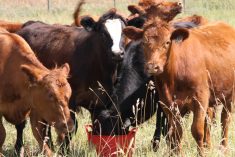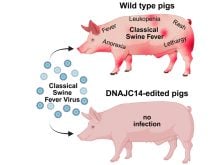SAN ANTONIO, Texas Ñ Montana rancher Bill Donald came to the National Cattlemen’s Beef Association annual meeting ready for a fight over renewing trade with Canada.
Instead, the president of the Montana Stockgrowers Association presented a compromise he hopes cattle producers in his state can live with once the United States resumes trade in cattle younger than 30 months on March 7. The 11 point directive will be forwarded to the federal government.
An open border has become a divisive issue among cattle producers who fear the economic and health effects of opening the border.
Read Also

The Western Producer Livestock Report – November 6, 2025
Western Producer Livestock Report for November 6, 2025. See U.S. & Canadian hog prices, Canadian bison & lamb market data and sales insights.
The NCBA has received considerable pressure from members to proceed with caution.
Melvin Leland of North Dakota said producers expect the NCBA to make a decision that favours them.
“They want to see something come down on the side of producers.”
Donald said he accepts the border will open and offered the compromise for the greater good.
“Packers could close. If we lose a packer, we could lose a feedlot.”
The directive, which was drawn up by six northern states, reaffirmed many of the positions from the U.S. Department of Agriculture rule that allows trade to resume.
The rule recognizes Canada as a minimal risk country for BSE and sets specific parameters to restart livestock movement for all ruminants as well as an expanded list of meat products.
The directive was passed unanimously at the final NCBA session on Feb. 5 and ties the reopening of live cattle trade with Canada to other unresolved trade issues, such as resuming trade with Asian nations and settling longstanding grievances over Canadian bluetongue and anaplasmosis regulations.Ê
The conditions:
- Prohibit cattle and beef from cattle older than 30 months.
- Assure that all Canadian safeguards to prevent BSE function properly, specifically adherence to the feed ban.
- No feeder cattle should be imported until agreement is reached on harmonization of animal health standards, especially bluetongue and anaplasmosis.
- Movement of Canadian cattle into the U.S. must be managed to minimize market disruptions.
- Fed cattle imported for immediate slaughter must be certified to be younger than 30 months through age verification.
- Ban the use of fetal bovine serum from heifers imported for immediate slaughter.
- USDA grades and stamps will not be allowed on imported beef.
- Feeder cattle must be branded with a “CAN,” identified with an ear tag, certified to be younger than 30 months at time of slaughter, shipped in sealed trucks from the border directly to an approved feedlot and moved directly in sealed trucks to slaughter.
- Feeder heifers imported into the U.S. from Canada must be spayed.
- USDA must work with primary trading partners to ensure that expanded export access for U.S. beef is not jeopardized by allowing cattle and beef from Canada.
- The U.S. administration must reach an agreement to re-establish beef trade with Japan, South Korea and Mexico, and apply economic sanctions if necessary.















